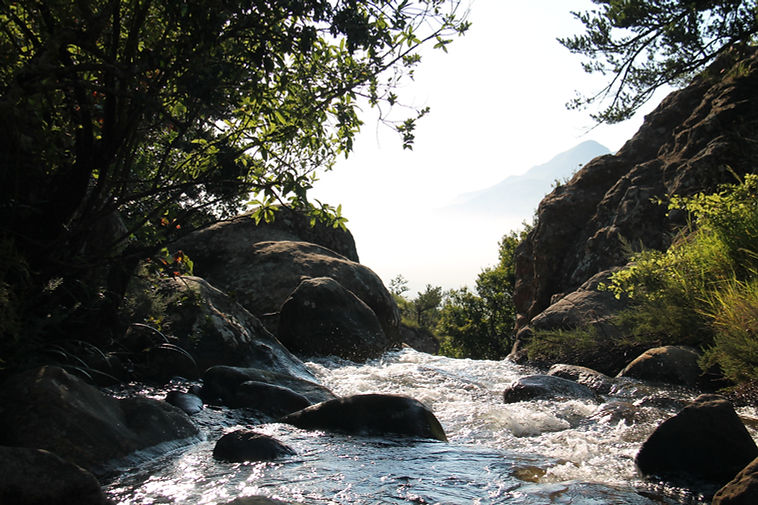
Save California Salmon (SCS) is dedicated to policy change and community advocacy for Northern California’s salmon and fish dependent people. We support the fisheries and water protection work of the local communities, and advocate effective policy change for clean water, restored fisheries and vibrant communities.
Upcoming Events & Immediate Actions

.png)
Artwork by Mahlija Florendo
March 2021 - Save California Salmon, the Blue Lake Rancheria, the Yurok Tribe's Visitor Center, KTJUSD’s Indian Education Program, Humboldt County’s Pathmakers Program, Humboldt State University’s (HSU) Native American Studies Department, and the Hoopa High School Water Protector’s Club released the Advocacy and Water Protection in Native California High School Curriculum and Teacher’s Resource Guide. The curriculum, which meets California state standards in science, social studies, health, history and language arts responds to California’s urgent water, climate and educational crises, along with the need for Native American culturally informed education and representation in schools.
The curriculum features online, classroom, and nature-based learning and responds to reports that Humboldt, Del Norte, and other counties are failing Native students, and that Native youth are facing a mental health crisis due to COVID-19 and the state’s water and climate crises.
“This curriculum was created for high schools, however all of California’s primary and university students and faculty can benefit from the culturally-informed lessons it provides” explained Dr. Cutcha Risling Baldy, Department Chair for HSU’s Native American Studies Department. “California faces a water and climate crisis that will only be solved by foregrounding Indigenous management practices. Our restorative environmental management and tribal place-based knowledge are best practices for climate resiliency. If we teach the next generation how to better manage and live with the land. They will become the leaders that can solve our challenges.”
We have over 50,000 signatures on our Stop Sites Reservoir petition. We need more!

Artwork by Tori Mcconnel
Our salmon are facing extinction and our drinking water is threatened. Our rivers need water and our regulators and governor need to stand up to Corporate Agriculture before we do not have clean water.
Sites Reservoir is a proposed 13,200 acre private reservoir in the lower Sacramento River/Upper Bay Delta near Willows, CA. It would be one of the largest reservoirs in California and include new diversions from the Sacramento River.
The Sites Reservoir is planned to fill the controversial Delta Tunnel. It would deliver expensive water to Southern California. Farmers that use the majority of the State's water, such as almond and rice farmers, used 4 times as much water as the city of Los Angeles during the 2021 Drought.
Sites would be a 1.5 million acre foot reservoir. In contrast, minimum releases from the Trinity Reservoir to the Trinity River is about 340,000 acre-feet a year.
Sites would flood Native American cemeteries and ceremony sites and three creeks. It would further degrade salmon runs, harming this important food source.
Sites Reservoir would be privately owned, however California has promised over $816 million dollars in taxpayer money to the project.
California already has over 1400 reservoirs or dams and 5x times more water is allocated than actually exists in the Sacramento and Trinity Rivers.
Sites would build new diversion pumps to take fresh water from the Sacramento near Red Bluff. It would release polluted water to the Delta. This will make the drinking water quality worse for over 25 million Californians.
At the end of 2020 California, Oregon and Berkshire Hathaway entered a new agreement to undam the Klamath River. This decision came after almost twenty years of organizing, testifying, actions and planning from the native peoples of the Klamath basin, coastal fishermen and their allies. This year we continue our advocacy to make sure these dams come down.
Click on the hashtag above to view more videos.
















